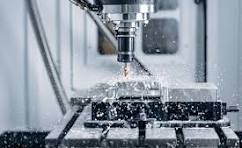The medical industry demands nothing less than perfection. From surgical instruments to implants and diagnostic equipment, every component must meet strict quality, safety, and precision standards. In this context, CNC (Computer Numerical Control) machining has become a cornerstone of medical device manufacturing.
CNC machining offers unparalleled accuracy, repeatability, and flexibility, making it ideal for producing both prototypes and final medical devices. With materials ranging from stainless steel to biocompatible plastics, CNC machining ensures that parts meet stringent industry regulations while maintaining cost efficiency and scalability.
Why CNC Machining is Essential in Medical Manufacturing
Medical devices are often life-saving tools, and any error in manufacturing can lead to severe consequences. CNC machining addresses these challenges by:
- Ensuring High Precision: Tolerances as tight as ±0.001 inches.
- Supporting Biocompatible Materials: Titanium, stainless steel, and PEEK for implants and surgical tools.
- Meeting Regulatory Compliance: FDA, ISO 13485, and other standards.
- Enabling Rapid Prototyping: Faster product development cycles.
- Scaling Efficiently: From one-off prototypes to mass production.
Key Applications of CNC Machining in Medical Industry
1. Surgical Instruments
Scalpels, forceps, clamps, and scissors require sharp edges, durability, and corrosion resistance. CNC machining allows these tools to be produced with exact dimensions and smooth finishes.
2. Orthopedic Implants
Knee, hip, and spinal implants need biocompatible metals like titanium and stainless steel. CNC machining ensures implants fit patient-specific anatomy with customized precision.
3. Dental Devices
Crowns, bridges, and orthodontic tools are often milled using CNC machining. The ability to work with ceramics and metals makes it a popular choice in dentistry.
4. Diagnostic Equipment Components
Parts for MRI machines, CT scanners, and ultrasound devices require high accuracy. CNC machining ensures these components work flawlessly in sensitive medical environments.
5. Prototyping New Medical Devices
Medical startups and R&D labs rely on CNC machining to quickly create prototypes for testing functionality and compliance before mass production.
Common Materials Used in Medical CNC Machining
1. Stainless Steel
- Corrosion-resistant and strong.
- Widely used in surgical instruments and implants.
2. Titanium
- Biocompatible and lightweight.
- Ideal for implants like pacemakers, joint replacements, and dental implants.
3. Aluminum
- Lightweight and durable.
- Used in medical housings, surgical trays, and diagnostic equipment.
4. Plastics (PEEK, ABS, Nylon, Acrylic)
- Lightweight, cost-effective, and versatile.
- PEEK is particularly valued for implants due to its strength and biocompatibility.
5. Cobalt-Chrome Alloys
- High wear resistance and strength.
- Commonly used in orthopedic implants and dental prosthetics.
Advantages of CNC Machining in Medical Device Manufacturing
1. Exceptional Precision
Medical parts require high accuracy—CNC machining can achieve tight tolerances, ensuring reliability in life-critical devices.
2. Biocompatibility
Supports materials approved for use inside the human body, such as titanium and stainless steel.
3. High-Quality Surface Finish
CNC machining produces smooth surfaces, which are essential to reduce bacterial growth on surgical tools and implants.
4. Customization
Patient-specific implants and devices can be designed and manufactured efficiently.
5. Fast Prototyping and Production
Speeds up innovation in medical research and device development.
6. Scalability
From single prototypes to thousands of production units, CNC machining adapts easily.
Challenges in CNC Machining for Medical Devices
- Strict Regulatory Standards – Compliance with FDA, ISO, and CE certifications is mandatory.
- High Material Costs – Biocompatible materials like titanium and PEEK are expensive.
- Complex Geometries – Medical devices often require multi-axis machining.
- Surface Requirements – Some parts require additional polishing, passivation, or coating.
- Data Security – Patient-specific designs demand secure handling of digital files.
Overcoming Challenges
- Using 5-Axis CNC Machining: To produce complex geometries efficiently.
- Quality Assurance Protocols: Automated inspection systems ensure compliance with tight tolerances.
- Partnering with Certified Manufacturers: Ensures adherence to global medical standards.
- Hybrid Manufacturing: Combining CNC machining with 3D printing for cost-effective solutions.
- Automation and Smart CNC Systems: Reducing human error and improving consistency.
CNC Machining vs Other Medical Manufacturing Methods
CNC Machining vs 3D Printing
- CNC Machining: Better for metals, high precision, and biocompatible implants.
- 3D Printing: Good for rapid prototyping and complex shapes but limited in materials and surface finish.
CNC Machining vs Injection Molding
- CNC Machining: Ideal for low-volume and custom devices.
- Injection Molding: More economical for high-volume plastic components but requires expensive tooling.
The Future of CNC Machining in Medical Industry
The medical field is evolving rapidly, and CNC machining will continue to play a vital role. Future trends include:
- AI-Powered CNC Systems – For faster decision-making and error reduction.
- Digital Twins – Simulating medical devices virtually before production.
- Nano-CNC Machining – Manufacturing ultra-small medical components for microsurgery.
- Sustainable Manufacturing – Using recyclable materials and reducing waste.
Conclusion
CNC machining has become an indispensable technology in medical device manufacturing. Its ability to deliver precision, reliability, biocompatibility, and scalability makes it the go-to solution for surgical instruments, implants, diagnostic tools, and prototypes.
As medical technology advances, CNC machining will continue to evolve, integrating with AI, smart manufacturing, and new material innovations. This ensures that future medical devices will not only meet strict regulatory standards but also provide safer, faster, and more effective solutions for patients worldwide.






